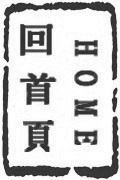
Electronic Music
电子音乐/Dian4 Zi3 Yin1 Yue4
電子音樂
CHEARS: False
EARS: True
CMT: False
EARS2 Encyclopedia: True
CHEARS:
EARS:
起初,电子音乐的音响材料是通过电子手段合成的,而并非预先录制,据史料记载,电子音乐最开始是由震荡器与噪声发生器合成而来的。此外,在如今的美国,还用“电子音乐”这个词来表示“电声音乐”。在德语中,“Elektronische Musilk”这个词(电子音乐的德语)有着更明确的历史意义。它源自于上世纪50年代初,在克隆广播工作室中以电子手段生成后序列主义音乐作品。而在法语中,“电子音乐”一般与流行电子乐(如高科技舞曲或称“铁克诺”)同义。
Originally, music in which the sound material is not pre-recorded, but instead uniquely generated electronically, historically through oscillators and noise generators, currently digitally. There are some, particularly in the United States, who use this term today as a synonym for electroacoustic music. The German equivalent, Elektronische Musik has more precise historical connotations, referring to electronically generated post-serial composition that commenced in the early 1950s in the broadcast studios in Cologne. In French, electronic music is also currently used as a synonym for genres of popular electronic music such as techno.
EARS 2:
Electronic music is made from electronic signals which are converted into sound by loudspeakers.
Where did it begin?
In the 1950s, composers in the radio studios at Cologne (Germany) began to experiment in creating music with electronic equipment.
Many other studios soon built up collections of electronic equipment, originally invented to test the radio equipment, and composers began to use these as new instruments with which they could create new works.
Solitaire by Arne Nordheim
Listen to this piece of electronic music composed by the Norwegian Arne Nordheim in 1968. Individual electronic tones are looped, layered and combined to create a rich and dramatic sound world with a great sense of depth. (See below for a more detailed investigation of this clip).
What does this music involve?
By working with electronic oscillators, composers were able to control every detail of the sounds that they created. This allowed them to be very precise and create exactly the type of sound that they planned.
They were able to manipulate the main parameters of sound (pitch, loudness, duration) with the controls on their electronic devices, and to alter timbre and character of the sounds that they created by changing the basic soundwave type and the shape of the sounds over time.
Absolute Control
Starting with the basic building blocks of sound gives the composer absolute control from the beginning. However, this does mean that the composer must specify every detail about the sound in order to get the sound that they want.
But working with pure electronic tones as building blocks, composers of electronic music have a much cleaner working process than the messy and experimental world of Musique Concrète. They begin with pure, simple sounds and build them into more complex structures.
Fact
Because they were able to easily create a lot of sounds, many composers used simple rules to help them narrow down the sounds that they wanted to use in their piece.
These rules might involve:
a) only using a select few sounds,
b) never using the same sounds next to one another, or
c) leaving it completely up to chance and letting the roll of dice decide which sound to use next.
Composition Tools
Electronic music sounds are mostly generated and designed in the way the composer wants them.
Sometimes manipulations are needed and those commonly used in Electronic Music are:
Loop
Transposition
Filter
Reverb
Echo
How was that piece made?
The example which we listened to earlier “Solitaire” [by Arne Nordheim] is made from three main layers of electronic sound.
Click below to play the clip while viewing the spectrogram visualisation of the sound.
Learn more about each of the three sections below.
Extra
Karlheinz Stockhausen was an important composer of electronic music who worked in the Cologne studios.
Before travelling to Cologne he worked with Pierre Schaeffer in Paris. Because of this, he combined both the ideas and methods of Musique Concrète with those of Elektronische Musik. Creating works such as Gesang Der Jünglinge in which he combined recorded sounds of a boy’s voice (manipulated using transposition, splicing and montage) with electronic tones.
Extra
Further works by Arne Nordheim are available from Rune Grammofon RCD 2002 c&p 1998:
Click here to link to the other musics available.
Keywords:
Abstract Sounds, ADSR (Attack, Decay, Sustain, Release), Analogue , Electronic Music, Elektronische Musik , Oscillator, Pitch Shifting , Sine Wave
Encyclopedia:
Music in which the sound material is not pre-recorded, but instead uniquely generated electronically, through oscillators and noise generators.
There are some, particularly in the United States, who use this term today as a synonym for electroacoustic music.
The German equivalent, Elektronische Musik has more precise historical connotations, referring to electronically generated post-serial composition that commenced in the early 1950s in the broadcast studios in Cologne. In French, electronic music is also currently used as a synonym for genres of popular electronic music such as techno. [EARS]
参看其它/See Also
术语翻译/Terms Translator
术语校对/Terms Proofreader
术语顾问/Consultant to terminology
参考文献/Bibliography
讲座/Lecture
评论/Comments
发表评论(预先注册)/Add comment on this term(members ONLY)